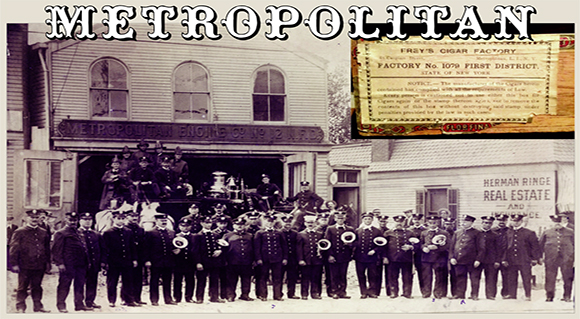Have you been to Metropolitan lately? I don’t mean the Avenue specifically, but the neighborhood called Metropolitan. Not sure where that is? Chances are you’ve visited many times without ever realizing it. The late historian, Vincent Seyfried, defined Metropolitan in the Encyclopedia of New York City as: “Former neighborhood in west central Queens, surrounding the intersection of Metropolitan and Flushing Avenues in what is now Ridgewood and an area near Maspeth Creek. It was an unprosperous hamlet that was the site of a tollhouse for Flushing Avenue. The two main avenues were turnpikes from 1816 until about 1870. The name fell into disuse after the First World War.”
That’s the short version. The long version is a lot more complicated.
The neighborhoods of Newtown near the Brooklyn border frequently were subject to name changes and confusion over where their boundaries were. Ridgewood was once called “East Williamsburgh” and then “Evergreen” before its residents finally decided on its current name. And different sections of Ridgewood formed their own unique identities. In the most western extreme, there were areas called Old Germania Heights and Wyckoff Heights. Likewise, Maspeth’s southern end contained the areas of Linden Hill and Melvina. Ridgewood and Maspeth came together at Metropolitan Avenue.
A hardscrabble neighborhood grew around the intersection of Flushing and Metropolitan Avenues, and the area became known as Metropolitan (perhaps because “Flushing” was already taken!). Newspaper records from the 1800s and early 1900s reveal that the name was applied to a vast area expanding in several directions. The LIRR tracks formed a neighborhood boundary to the north, but to the east, Metropolitan extended all the way to Fresh Pond Road. The East Branch of Newtown Creek was known as “Shanty Creek” and formed the natural boundary of Metropolitan to the west.
There was a very active Metropolitan Civic Association. They sought local improvements to roads, public transit and telephone service. They also sought new parkland in the area. The president of the group for many years was Andrew Reiff, for whom Reiff Park is named. Reiff cut the ribbon on Eliot Avenue when it opened prior to the 1939 World’s Fair. The civic later merged with a Ridgewood group and became known as the Ridgewood-Metropolitan Civic Association.
Originally home to a Dutch Reformed Church, the Presbyterian Church of Metropolitan was located just south of Metropolitan Avenue on the western side of Flushing Avenue. Unfortunately, it was demolished during the first half of the 20th century and its location is now a tire store.
The Metropolitan Oval, a renowned soccer field off 60th Street, was built in 1925 by German and Hungarian immigrants and is named after the town of Metropolitan.
My great-grandfather was a cigar smoker. In his old house in Maspeth, which is still owned by my family, a recent expedition into the basement turned up an old cigar box. The stamp on the box of Flor Finas said, “Frey’s Cigar Factory, 43 Caspian Street, Metropolitan, L.I., N.Y.” Caspian Street was the former name of 56th Street.
Metropolitan Engine Company No. 12 N.F.D. (Newtown Fire Department) was located on Metropolitan Avenue near Forest Avenue. When the City of New York took over firefighting services after unification, it built a firehouse nearby on Metropolitan Ave at 56th Street.
A part of Middle Village near 75th Street and 67th Ave was previously known as “Metropolitan Heights,” being uphill from Metropolitan proper. Not too far away was the Metropolitan Heights Race Track which ran both cars and horses. This site later became Juniper Valley Park.
Looking at newspaper records from the 20th Century, it appears that the name Metropolitan was in complete disuse by the 1960s. Part of the town was absorbed into Ridgewood and the rest into Maspeth. “Metropolitan Heights” never caught on and became part of Middle Village once again.




